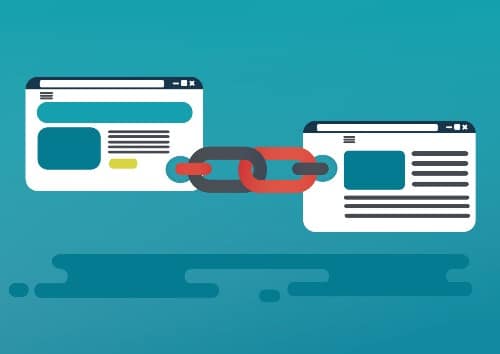What Are Internal Links?
When you’re writing a blog post, it’s important to use internal links. Internal links are links that take readers from one page on your website to another. They can be in the form of:
- Hyperlinks in a post. These are the most commonly used way to link to other content, whether internally or externally, and are simple to create.
- A table of contents (preferably in a side panel so it is always visible). This is a more formal way of organizing links, and is suitable for longer blogs with multiple sections that may be broken out by weeks or steps.
- A list of additional articles relating to the subject. This could be below the blog post, so the reader sees their options if they want to continue reading about the subject (or be directed to the next post).
- A tag cloud with links. According to Wikipedia, a tag cloud (also known as a word cloud, Wordle, or weighted list in visual design) is a visual representation of text data, which is often used to depict keyword metadata on websites, or to visualize free form text.
Tags are usually single words, and the importance of each tag is shown with font size or color. When used as website navigation aids, the terms are hyperlinked to items associated with the tag.
Why Should I Build Internal Links?
Here are a few reasons why you should utilize internal link building in every blog post:
1. They keep readers engaged with your content.
When you include internal links in your blog posts, it keeps readers engaged with your content. Imagine the difference between two websites, both with identical content. You’re reading a blog post that discusses different ways that people have been successful starting their own business.
 Each website has the same article, with the same 5 sections, each describing a different business idea and some facts about how to start the business and what to expect. The only difference is on one of the websites, that same article has links in each section, each link going to either an in-depth discussion about different aspects of the business it’s describing, a first-person interview with those who have followed the steps and their real-life results, and maybe some checklists or additional resources. The other website has all of this information as well, but it’s not linked in the post, and the reader may be unaware that it is available.
Each website has the same article, with the same 5 sections, each describing a different business idea and some facts about how to start the business and what to expect. The only difference is on one of the websites, that same article has links in each section, each link going to either an in-depth discussion about different aspects of the business it’s describing, a first-person interview with those who have followed the steps and their real-life results, and maybe some checklists or additional resources. The other website has all of this information as well, but it’s not linked in the post, and the reader may be unaware that it is available.
Internal links allow your readers to more easily navigate to other related pages on your website, and they may be more likely to stay on your website longer. This can help improve your website’s search engine rankings, since Google takes into account how long people stay on your website.
2. They help you control the flow of traffic on your website.
Closely related to keeping your users engaged with your website, internal links also help you control the flow of traffic on your website. You can use them to send readers to specific pages on your website, or you can use them to promote your most popular content, hopefully gaining more readers and shares.
This can help you increase traffic to your website and keep people engaged with your content.
3. They improve your website’s search engine rankings.
One of the biggest benefits of using internal links is that they can improve your website’s search engine rankings. When you include links to other pages on your website, it tells Google that your website is valuable and that it contains a lot of relevant information. This can help you rank higher in search engine results pages, which can result in more traffic to your website.
Internal Linking and SEO
Internal links are an important part of every blog post, and they should be used in every post to get the most out of your content. They keep readers engaged with your content, help you control the flow of traffic on your website, and they can improve your website’s search engine rankings, if done correctly.
One word of warning though: be aware that different types of internal links, and how they’re implemented, may affect your search engine rank, for better or worse. Monitor closely how your ranking is affected by your internal link implementation, and make changes over time as they’re needed.
At Sympler, our SEO team are internal link experts who utilize internal links as part of our process for content SEO. To learn more about what our content and other SEO services can do for you, contact us today for a free consultation.




